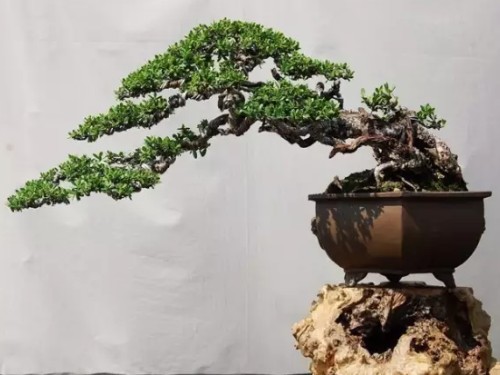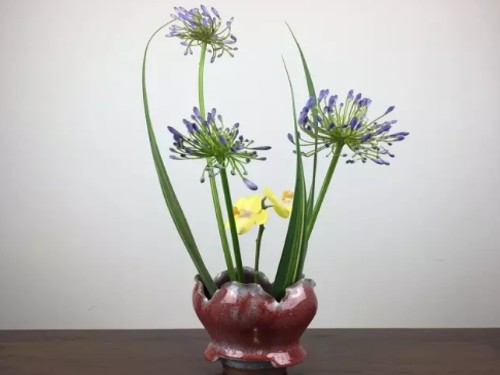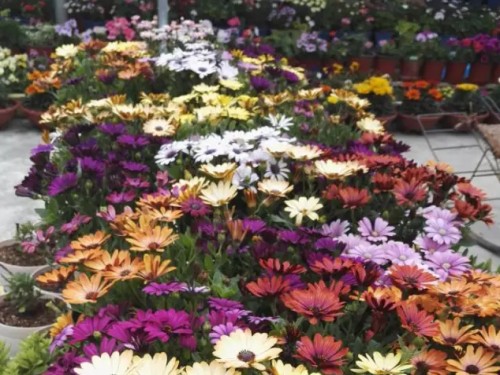Key technical points and matters needing attention in bonsai maintenance
The most important thing to raise bonsai is to have a good grasp of dry and humidity, generally based on the principle of "no dry, no watering, no watering". It is about once every three to four days in spring and autumn, once a day in summer, and once a week or more in winter, depending on water evaporation. It is usually better to water at eight or nine o'clock in the morning. In the open bonsai rainy season, we should pay attention to clean up the stagnant water in time to prevent asphyxiation caused by lack of oxygen at the root of the plant.

Plants need photosynthesis, so sunlight is very necessary. In spring, summer and autumn, bonsai must be placed in a sunny place, and indoor bonsai must be exposed to the sun every three days, while southern green plants that are not defined by bonsai are not needed on the market. Indoor storage in winter must have sufficient diffuse light to maintain normal photosynthesis of the plant.
Generally, the suitable ambient temperature of bonsai ranges from 20 ℃ to 35 ℃. It is important to grasp the time when bonsai enters the greenhouse. It is possible to enter the house in autumn about ten days after Frosts Descent. Entering the house after one or two slight frosts is conducive to germination and flowering in the coming year. Spring out of the room before and after Grain Rain, leaving the room early will cause spring freezing due to the obvious alternation of cold and warm. Cypress bonsai, spring bonsai is generally not afraid of cold.
The bonsai bought home is already set. After a period of growth, the spread of the branches and leaves of the plant will lead to a change in the original shape. At this time, it is necessary to trim the branches and leaves to maintain the shape of the bonsai. The extent of pruning generally will not affect the survival of the plant, you can give full play to your understanding and creativity of bonsai modeling. When pruning, in order to avoid breaking leaves and bald branches, the cut should be placed on the stalk.
Although bonsai is good-looking, it is difficult to maintain. In the process of bonsai maintenance, we must pay attention to the following five taboos, so as not to cause unnecessary harm to your bonsai.
1. Avoid drought
When I think of watering, I don't water it if I don't remember it. Sometimes I don't care for several days in a row. Once the leaves are found to be wilting, they quickly replenish the water, and the leaves return to normal. This is a reaction of the pile body to adapt to the environment, but for a long time, excessive transpiration will eventually make the pile body "sick" difficult to recover, dehydration and death.
2. Avoid water stains
When the ambient temperature exceeds 28 degrees, the bonsai should be protected by shade, otherwise, the amount of water obtained by the pile from the soil is much lower than that lost by transpiration, the leaf edge will burn and scorch, and the pile will die from sunburn.
3. Avoid sudden shade
Usually, in order to avoid high temperature injury, when the ambient temperature exceeds the maximum temperature of the pile, the bonsai should be moved to the relatively low temperature area with weak light to facilitate the growth of the pile, but if it is suddenly moved into the indoor or low temperature area without light, within a few days, the leaves will fall off naturally, and the pile will shrink and die quickly.
4. Avoid taking a bath in the afternoon
Do not spray water to the pile under the light or water into the basin at noon in hot summer, this kind of "pet" way will make the bonsai temperature suddenly lower than the ambient temperature and hurt the pile.
5. Avoid fertilizing
Due to the high temperature in midsummer and the rapid loss of water on the leaf surface, fertilization can make the concentration of pile cells less than that of the external environment, resulting in the reverse flow of water in plant cells and the death of piles due to fertilizer damage.
Time: 2019-06-01 Click:
- Prev

Culture method of potted lotus in family
Baizi lotus is a mysterious and romantic flower of love, which has been blooming under the moisture of sunshine and rain, just like conveying the message of love. The hundred-seed lotus is native to the Cape of good Hope in South Africa, also known as purple orchid, blue gentleman orchid and African lily. It belongs to the genus Amaryllidaceae.
- Next

Cultivation method of blue chrysanthemum
Blue chrysanthemum is a beautiful ornamental plants, she alias African daisies, large flowers blue chrysanthemum. South African origin, not cold. Avoid hot, sunny environment, suitable for good drainage soil. Blue chrysanthemum rich in color, white, lavender, purple and other colors, can be used for flower border, or cut flowers do
Related
- Fuxing push coffee new agricultural production and marketing class: lack of small-scale processing plants
- Jujube rice field leisure farm deep ploughing Yilan for five years to create a space for organic food and play
- Nongyu Farm-A trial of organic papaya for brave women with advanced technology
- Four points for attention in the prevention and control of diseases and insect pests of edible fungi
- How to add nutrient solution to Edible Fungi
- Is there any good way to control edible fungus mites?
- Open Inoculation Technology of Edible Fungi
- Is there any clever way to use fertilizer for edible fungus in winter?
- What agents are used to kill the pathogens of edible fungi in the mushroom shed?
- Rapid drying of Edible Fungi

